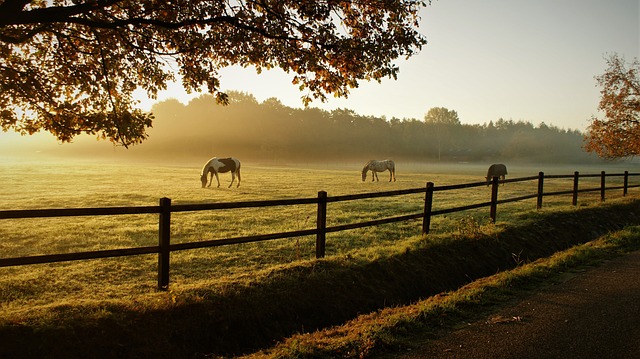For New Bedford, Massachusetts homeowners looking to install a new fence, navigating the DIY process can seem daunting. This comprehensive guide breaks down the entire project, from understanding your fencing options suitable for New Bedford’s unique yard landscapes, to detailed step-by-step instructions on measurement, planning, and installation. By following our expert tips on tools, post setting, panel attachment, and finishing touches, you’ll be well on your way to a secure, aesthetically pleasing fence that enhances your outdoor space.
- Understanding Your Fence Options for New Bedford Yards
- Measuring and Planning: A Step-by-Step Guide
- Gathering the Right Tools for Installation
- Setting Posts: The Foundation of a Solid Fence
- Attaching Panels: Creating Your Desired Fence Line
- Finishing Touches: Topping Off Your New Fence
Understanding Your Fence Options for New Bedford Yards
When it comes to fencing your New Bedford, Massachusetts yard, there are several options to consider, each with its own unique advantages and styles. Wood fences offer a classic look and can be tailored to various designs, from simple picket fences to more elaborate rails and panels. Vinyl fencing is another popular choice, known for its low maintenance and durability, providing a clean, uniform appearance that complements modern homes. Chain-link fences are ideal for security and are often chosen for backyard projects, offering a robust solution for active families and pet owners.
The right fence type depends on your personal preferences, budget, and the specific needs of your yard. Consider factors like privacy, durability, maintenance, and aesthetics. For instance, if privacy is a priority, opt for solid wood or vinyl fences that block out views effectively. If budget is a concern, chain-link fences offer a more cost-effective solution while still providing security.
Measuring and Planning: A Step-by-Step Guide
Before digging into your DIY fence project, meticulous planning is key. Start by identifying the perimeter of your desired fence line using a measuring tape. Mark these points clearly on the ground with flags or spray paint to ensure accuracy. Next, determine the type and style of fence you want – wood, vinyl, chain link, etc. Each material has unique installation requirements, so research best practices for your chosen option.
Create a detailed layout drawing, marking post locations, gate placement (if applicable), and any design elements like corner posts or lattice work. This visual guide will help ensure a straighter, more level fence line during construction. Plus, it’s helpful to check local building codes and regulations early on for any restrictions or requirements regarding fence heights, materials, or set-back distances from property lines.
Gathering the Right Tools for Installation
When it comes to DIY fence installation, having the right tools is half the battle won. For New Bedford homeowners taking on this project, a well-equipped toolbox will ensure a smoother process and better results. Start by gathering basic tools like a post hole digger, which is essential for creating the foundation of your fence. A hammer, wooden stakes, and string level are also crucial for aligning posts accurately.
Consider investing in more specialized tools such as a power drill with various bits, a measuring tape, and a utility knife for cutting materials. These tools will make the installation process faster and more precise, allowing you to create a sturdy and aesthetically pleasing fence that adds value to your property.
Setting Posts: The Foundation of a Solid Fence
Setting fence posts is an essential step, as it forms the foundation for your new fence. When installing posts in New Bedford’s diverse soil conditions, ensure each post is set at the correct depth and secured firmly. The ideal depth will vary depending on the soil type; loamy or sandy soils may require deeper setting than clay or rocky areas. Consider consulting a professional for advice tailored to your yard’s unique characteristics.
Proper spacing between posts is crucial for structural integrity. Generally, posts should be placed approximately 6 to 8 feet apart, but this can vary based on fence height and design. Adequate spacing allows for post expansion due to temperature changes while maintaining the fence’s stability and longevity.
Attaching Panels: Creating Your Desired Fence Line
When attaching fence panels, it’s crucial to start by creating your desired fence line. Measure and mark the perimeter of where you want your fence to stand, ensuring that each side is straight and even. This will serve as a guide for installing the posts and panels correctly.
Use string or chalk to outline the marked boundary, providing a clear visual reference. Once satisfied with the line, attach the wooden posts at strategic intervals using concrete. Post-installation, secure the fence panels to the posts, ensuring they are level and properly aligned along the established fence line.
Finishing Touches: Topping Off Your New Fence
Once your fence is fully installed and all posts are secure, it’s time to consider the finishing touches. Adding a cap or top rail to your fence not only improves its aesthetic appeal but also increases durability. A cap can protect the top of your posts from weather damage and prevent rot or decay over time. Choose a style that complements your fence material and design—for example, a simple wooden cap for a traditional picket fence or a more elaborate metal cap for a modern, industrial look.
Additionally, consider adding lighting to your new fence. Not only does it enhance safety by illuminating your yard at night, but well-placed lights can also serve as a security measure and add ambiance to your outdoor space. Choose weatherproof fixtures that match your fencing style, and ensure they are strategically placed for optimal visibility and functionality.
